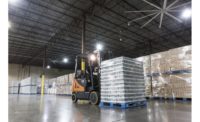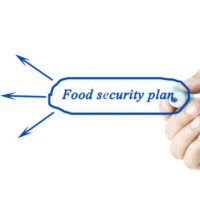Food Safety with the Art of Sous Vide

Sous vide, also known as "precise temperature" cooking, is a technique used to ensure the even cooking of food items in a way that retains moisture and enhances desirable qualities like texture and taste. It works by enclosing food in a sealed, food-safe, plastic vacuum pouch, which is then submerged and slow cooked in water at constant, precise temperatures until the food is fully cooked and pasteurized. Not only does sous vide deliver higher-quality and better-tasting meals than traditional cooking methods, but it also offers the added benefit of being conducive to healthier digestion.
In the past, sous vide was reserved for high-end restaurants, but as chefs increasingly realize the benefits of this innovative method, more and more restaurants are beginning to add sous vide items to their menu.
One caveat, though, is safety. Critics of sous vide are understandably wary of the method because it involves innovative procedures that consumers do not typically employ when cooking at home—i.e. cooking with plastic and potentially exposing food to pathogens. When executed properly, sous vide can be safer than traditional cooking methods because it is a fully pasteurized process that kills spoilage and pathogenic bacteria. Conversely, traditional cooking methods present more opportunities for food to become exposed to pathogenic bacteria before and after cooking, such on cutting boards or countertops, because it is not hermetically sealed like sous vide.
The first concern is plastic. In the public eye, plastic is viewed as a chemical compound that emits toxins into our food and beverages. While this belief holds true for certain plastics under specific conditions, the plastics used at the restaurant level are safe and nontoxic. Not only are the commercial plastics specifically designed for sous vide safe, but even the plastics used in household zip-top bags will not raise any health concerns for sous vide cooking. However, it is important to check the specifications on those bags to ensure they are designed for heat.
"Food service operations that cook sous vide should be using pouches that have no oxygen transfer rate, no endocrine-disrupting chemicals, and also are rated for high temperatures," said A.J. Schaller, Executive Chef of the Culinary Research & Education Academy. "Every approved supplier should provide this in their letter of guarantee, which is a Hazard Analysis and Critical Control Point [HACCP] plan requirement."
Different types of plastics are used in consumer goods. For example, plastics used in food packaging or food storage comply with U.S. Food and Drug Administration (FDA) regulations and are generally nontoxic unless burned. However, even within the scope of food plastics, some are more sensitive to heat and, therefore, potentially more likely to emit toxins than others. You might remember certain plastics warping or melting in the microwave. These types of plastics are not heat-resistant and may release toxins when microwaved or submerged in hot water. For a restaurant that serves potentially hundreds of patrons a day, safety is a top priority.
Companies that provide sous vide equipment, as well as those that provide prepared sous vide food, take additional safety precautions to use heat-resistant plastics that are specifically designed to withstand high temperatures. Additionally, any plastics being used for commercial sous vide cooking must be approved by FDA and the National Sanitation Foundation.
"It is important to note that bags rated for sous vide cooking with the air removed via a chamber sealer are not meant for refrigerated preservation of raw products," said Schaller. "The best operation procedure is to cook sous-vide foods immediately after sealing; this is a common misconception in the industry."
"If you aren't preparing your own sous vide, a HACCP plan submission to your regulatory body is not required," said Schaller. "Also, according to the Food Code, if you purchase sous vide foods from an approved supplier, then the food can be served at any temperature for immediate service. If you're hot holding, you can hold at 135 °F instead of the 165 °F required if you prepare your own."
The second concern is microbial bacteria. Critics of sous vide assume that the longer cooking times associated with the technique open an extended window for food contamination. The assumption is logical; without proper training, sous vide can yield bacterial growth. For this reason, it is vital to know the risks before cooking sous vide at home.
At the restaurant and commercial level, however, sous vide chefs are painstakingly thorough when it comes to storing, handling, and cooking food. Most companies providing sous vide services have the technique down to a science. Through extensive training, temperature monitoring, and meticulous cooking methods, sous vide chefs are experts at producing safe and delicious meals. As trained specialists, they control bacterial risks by stylizing their methods in a way that destroys all vegetative forms of pathogenic bacteria. With proper chilling and storage procedures, no spores of pathogenic bacteria are revived.
As sous vide becomes popularized in restaurants, more consumers can safely experience the appealing textures and flavors that the method offers.
Looking for a reprint of this article?
From high-res PDFs to custom plaques, order your copy today!








